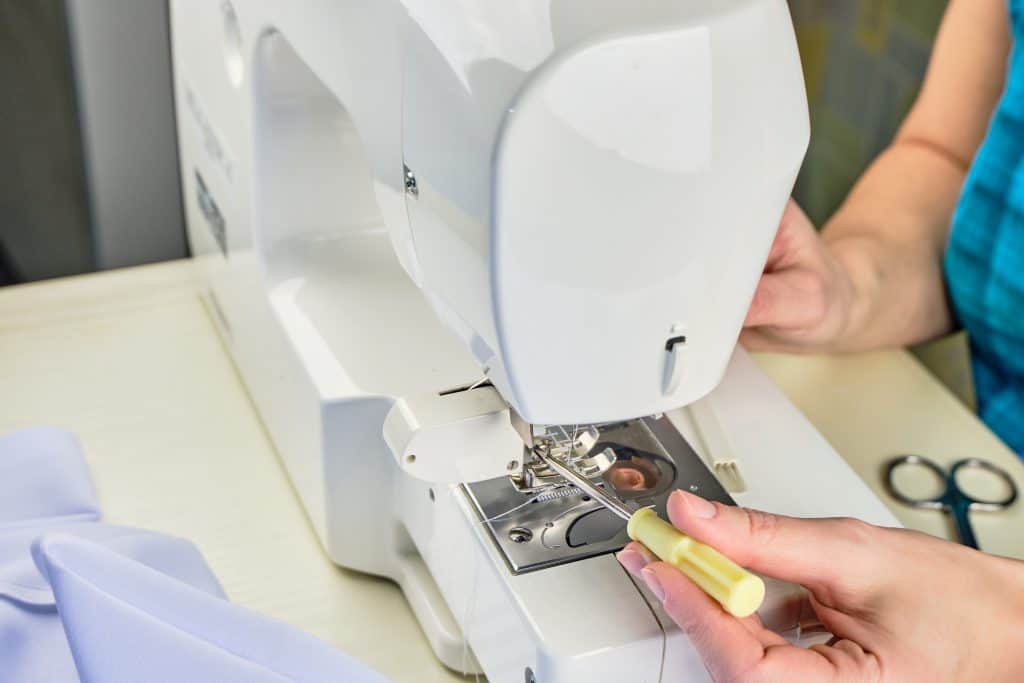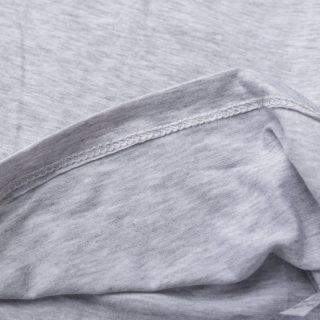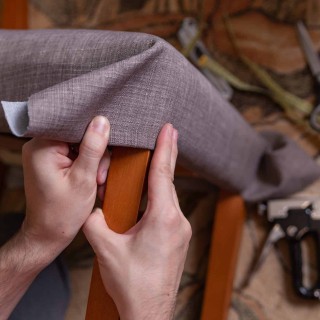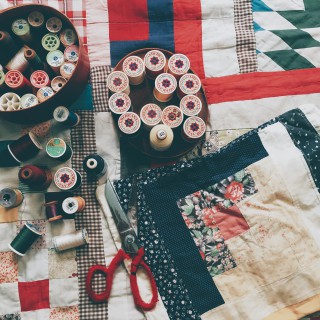There’s a vast number of sewing machines that have been produced over the decades. Some people still use vintage machines as they either find them cool or simply got used to them, while others follow the latest trends in the sewing world, and prefer to work on a rather modern sewing technology.
Older models are more persistent and long-lasting, as their parts are made of high-quality materials such as steel and metal, while the newer ones have lots of plastic parts that tend to break more easily.
Whatever type of machine you’re using – an old one or a newer model – you can prolong its life through simple maintenance.
If there’s a more complicated malfunction, you’d need to consult a licensed repairer and perhaps replace a part.
Simple maintenance includes cleaning, oiling, and proper handling, but also identifying sewing defects such as bobbin thread break, the bunching of threads, upper thread break, skipped stitches, irregular stitches, malformed stitches, etc.
Maintenance results in better work output, production quality, and higher safety while operating the machine.
The good news is – you can do all this by yourself, and I’m here to show you how!
Sewing Machine Maintenance: A Step-by-Step Guide
Depending on how often you use your sewing machine, maintenance should be done every few months, or if you use it a lot, every few weeks or so.
Some steps of the maintenance process can be done more often than others. For example, dusting can be done more often than oiling, because dust collects much faster than oil gets spent.
When you start cleaning the machine, you need to pay attention to its parts but also your hands, so you can make sure to avoid accidents, damages, or soiling the sewn material.
Keep the Non-Active Machine Covered
The first rule of sewing machine maintenance: when the machine is not being used, keep it covered with a cloth. That way you keep it protected from dust and other types of dirt.
Wipe the Machine After Every Use
After every use of your sewing machine, wipe it thoroughly so you don’t have to go through detailed cleaning and brushing as often.
Once you’re done with a sewing session, unplug the machine from electricity and use a piece of soft cloth to wipe the dust and thread fluff from the bobbin case and any other place where the dust usually gathers.
Dusting the Machine
The first step to cleaning the machine is removing the dust.
For this you’ll need:
- A screwdriver;
- Cleaning fluid;
- A flat paintbrush;
- A piece of soft cloth;
- Small vacuum cleaner or its crevice tool.
Before you start, the machine should be turned off and unplugged from the electricity, of course.
Then, you’ll need to remove the needle, the needle’s plate, and the foot, which will allow you to reach and clean up everything properly. These are easy to remove, but you’ll need a screwdriver.
Use the brush to remove the dust and thread fluff. You can also blow the dust away with your mouth or use the vacuum cleaner with the crevice tool.
If the dust is stuck to the machine, and the brush is not doing the job, try scraping it off with a needle. Be careful and don’t apply tools that might damage the parts (such as scissors or the screwdriver).
While dusting, search for any pieces of broken needles or leftover threads that could potentially jam the machine.
Use the cloth and the cleaning fluid to remove any visible lint.
Also, keep in mind that the better the quality of the thread, the less fluff it will make. So, here’s a maintenance pro tip: use a good quality thread. It’s not too expensive, and this investment will actually save you money for machine maintenance in the long run.
When you’re done removing the dust, make sure to check whether the foot or the needle need to be replaced. Run the needle through your fingers and check for any roughness or clogged eye. If you notice anything, perhaps it’s time for a new one. In general, a single needle should be replaced after 8 hours of work.
Check and Clean Your Bobbin
On vintage sewing machines, you can usually access the bobbin by sliding the plate standing next to the needle plate, but on modern machines, the bobbin is usually placed horizontally in front of the needle plate, and inside a mechanism. The bobbin case usually sits within its holder and rotates when the machine is working. It can be easily removed by pressing a pair of clips on the ring, or something similarly simple. No need for screwdrivers or other tools.
Your task is to remove the bobbin with its case, and then remove it from the case for cleaning. Use the brush or the vacuum cleaner to remove any dust.
As you’re cleaning the bobbin and its case, make sure to run your finger over the bobbin case holder’s hook to check for any roughness or irregularities. If there are any, use some fine emery to smoothen it.
Oiling Your Machine
A sewing machine should always be well-oiled. Just like with thread, it’s good to invest in a high-quality sewing machine oil. Although it may be slightly more expensive, it’s a long-term investment that will save you from buying new sewing machine parts or even an entire machine.
Before applying the oil to your machine, make sure to remove all lint deposits, dust, and thread fluff.
If you have a machine manual, it would be best to consult it for specific information on how to oil your model.
Try to locate the oil holes of the sewing machine that you’re using. They are commonly marked with arrows or red or yellow paint. Put a drop or two of the oil tops into each hole. Make sure you don’t clog the machine with too much oil.
If there’s any excess of spilled oil or dust, make sure to wipe it immediately. Excess oil can cause major problems and damage the fabric.
For a more visual explanation of how to oil your machine, check out this video below:
If your machine is used on a daily basis, you should oil it at least once a week, whereas if you only use it a few times per month, monthly oiling is more than enough.
Annual Servicing
Daily/weekly maintenance is a must to keep your sewing machine up and running, but you should still take it for annual maintenance if you want to preserve it in prime condition.
Regular maintenance can prevent minor problems with the machine growing bigger, so every once in a while, you should have a professional look at it. The technician will know when it’s time to adjust the timing and tension of the machine or fix parts that you didn’t even know existed.
This is, of course, if you want your machine to be long-lasting and in top shape. You can always give a local technician a shot, but there are 50:50 odds of whether it’s a hit or a miss. Branded machines are usually under warranty and have their own licensed technicians, so you should reach out to them instead.
Additional Pro Tips
- Use good quality thread for less harmful junk;
- Use high-quality oil;
- Match the needle to the type of material that you’re using;
- Don’t overwind the bobbin and put too much tension on the thread;
- Match the foot presser to the type of fabric that you’re using;
- While sewing, hold thread tails out of the way so they don’t get caught up in your machine.
Wrapping Things Up
Every sewing machine has its own individual properties that make it different from other machines. However, sewing machines are quite meticulously designed, and they require care and maintenance. Overusing the wrong needle or forgetting to clean your machine on time can lead to harmful consequences when it comes to its functionality.
If you want to keep your machine up and running for your fun and creative sewing projects, we highly recommend regular maintenance:
- Cover the machine when you’re not using it;
- Wipe it after each use;
- Dust your machine on a weekly level or less frequently if you don’t use it often;
- Wipe and oil your machine, especially those parts that move during work;
- Take your sewing machine to a technician at least once a year, for a regular checkup.
This way, you’ll make sure that your sewing machine serves you long and well.








Charlotte Fleet
Thank you for mentioning how it is smart to have your sewing machine looked at by a professional every so often to prevent minor issues from becoming bigger. My mom’s sewing machine has started to malfunction occasionally and my mom wants to figure out the issue. I will have her take the machine to a professional repair service so the problem can be resolved.
Kristina Pearson
Preventative maintenance is always the best way to avoid bigger problems later on.